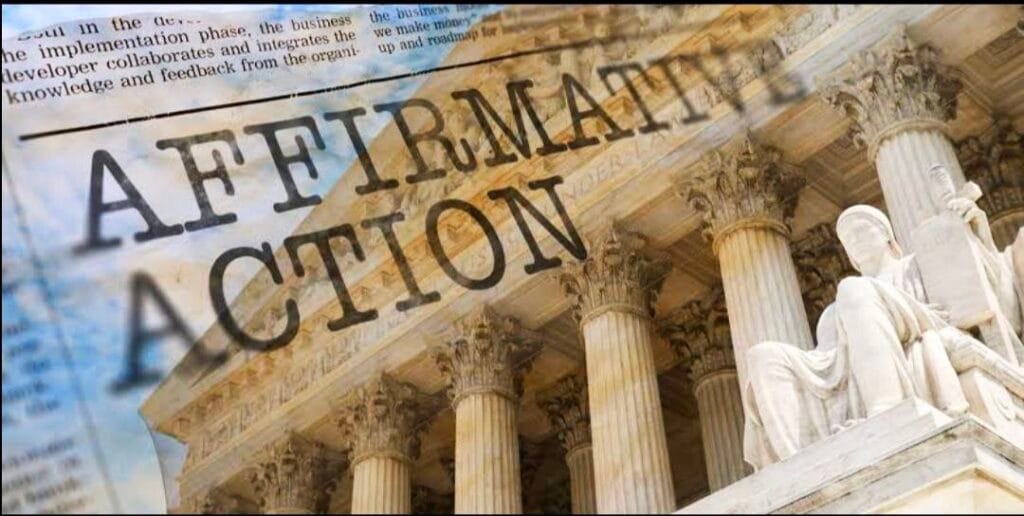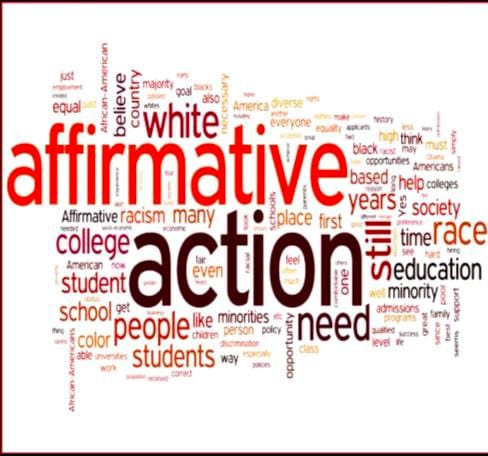Affirmative Action : Policies, Women, Caste, and Marginalized Classes
Affirmative Action : Policies, Women, Caste, and Marginalized Classes
Affirmative action refers to a set of policies and measures designed to promote equality by providing preferential treatment to historically disadvantaged groups. These measures aim to correct past injustices and present disparities caused by social, economic, and political discrimination. In the context of India, affirmative action is especially significant due to the deeply entrenched caste system and gender-based inequalities, along with the marginalization of certain religious and tribal communities.
1. Policies of Affirmative Action
In India, affirmative action is often implemented through reservations (also known as quotas) in areas such as education, employment, and political representation. These policies primarily benefit Scheduled Castes (SCs), Scheduled Tribes (STs), Other Backward Classes (OBCs), and women.
a. Reservation in Education and Employment
- Constitutional Provisions:
- Article 15(4) and Article 16(4) of the Indian Constitution allow the state to make special provisions for the advancement of any socially and educationally backward classes of citizens, including SCs and STs. These provisions form the basis for reservations in educational institutions and public sector jobs.
- Percentage of Reservation:
- Currently, 15% of seats are reserved for Scheduled Castes (SCs), 7.5% for Scheduled Tribes (STs), and 27% for Other Backward Classes (OBCs) in government jobs and higher education institutions (as per the Mandal Commission recommendations).
- OBC Quota and the Mandal Commission:
- The Mandal Commission Report (1980) played a crucial role in extending reservations to OBCs. The report recommended a 27% quota for OBCs in public sector jobs and higher education. This policy aimed to uplift socially and educationally backward communities who were underrepresented in these sectors.
b. Political Representation
- Reserved Seats in Legislature:
- The Constitution of India mandates the reservation of seats for SCs and STs in the Lok Sabha (House of the People) and State Legislative Assemblies to ensure their political representation. Article 330 and Article 332 provide for this reservation.
- Panchayati Raj Institutions:
- The 73rd and 74th Constitutional Amendments introduced reservations for SCs, STs, and women in local government bodies like Panchayats and municipalities. This has significantly increased the political participation of marginalized groups at the grassroots level.
c. Affirmative Action for Women
- Reservation for Women in Local Governance:
- The 73rd and 74th Amendments provide for the reservation of 33% of seats for women in Panchayats and municipalities. Some states, such as Bihar and Rajasthan, have even increased this quota to 50%. This measure has empowered women to participate actively in local governance and decision-making.
- Proposal for Women’s Reservation Bill:
- There has been a long-standing debate over the Women’s Reservation Bill, which seeks to reserve 33% of seats for women in the Lok Sabha and State Legislative Assemblies. While the bill has seen resistance from various quarters, it remains a critical aspect of the affirmative action debate for gender equality in political representation.
d. Quotas in Educational Institutions
- Reservation in Higher Education:
- Seats are reserved for SCs, STs, and OBCs in central and state-run universities and professional colleges under Article 15(4). These policies are designed to improve access to education for historically disadvantaged communities.
- Reservation in Private Institutions:
- The 93rd Constitutional Amendment allows the state to mandate reservations for socially and educationally backward classes in private, unaided educational institutions, except minority institutions. This expands the scope of affirmative action beyond public sector institutions.
e. Affirmative Action for Religious and Linguistic Minorities
- Special Schemes:
- While reservations are not directly provided based on religious identity, certain schemes target religious minorities, such as Muslims, Sikhs, Christians, Buddhists, Parsis, and Jains, for educational and economic development. Programs like Prime Minister’s 15-Point Programme for the Welfare of Minorities aim to address disparities faced by religious minority communities.

2. Affirmative Action and Women
While affirmative action in India has traditionally focused on caste, it has also extended to address gender inequality, especially in areas of political representation and education.
a. Political Representation
- The 33% reservation for women in Panchayats and municipalities has been a landmark move to increase women’s participation in local governance. Women’s leadership in these positions has had a positive impact on local development, particularly in issues related to education, health, and sanitation.
b. Education and Employment
- Affirmative action policies in educational institutions and employment have indirectly benefited women, especially from SC, ST, and OBC communities. However, there is still a need for gender-sensitive affirmative action that explicitly addresses the systemic barriers women face in higher education and professional careers.
c. Challenges and Gaps
- Despite reservations in local governance, the representation of women in higher political offices, such as the Lok Sabha and State Assemblies, remains low. The Women’s Reservation Bill has not been passed, which remains a major gap in achieving gender parity in Indian politics.

3. Affirmative Action and Caste
Caste-based affirmative action has been a critical tool for addressing centuries of social and economic discrimination faced by the Scheduled Castes (SCs), Scheduled Tribes (STs), and Other Backward Classes (OBCs). These policies aim to promote their inclusion in education, employment, and political representation.
a. Scheduled Castes and Scheduled Tribes
- Historical Discrimination: SCs and STs have faced severe social ostracization and economic deprivation due to the caste system. Affirmative action policies, including reservations in education, government jobs, and political representation, aim to correct these historical injustices.
- Political Empowerment: SCs and STs have benefited from reserved seats in legislatures, helping them gain political power and advocate for policies that benefit their communities. Leaders like B.R. Ambedkar and parties like the Bahujan Samaj Party (BSP) have played significant roles in promoting the rights of SCs.
- Economic and Social Mobility: Affirmative action has enabled many individuals from SC and ST communities to access education and employment opportunities, facilitating upward mobility and improving their socio-economic status.
b. Other Backward Classes (OBCs)
- The Mandal Commission was instrumental in extending affirmative action to OBCs, a diverse group that includes both relatively advantaged and disadvantaged communities. OBCs are entitled to 27% reservation in government jobs and educational institutions.
- Social and Political Assertion: The rise of OBC leaders, particularly in states like Uttar Pradesh and Bihar, reflects the political empowerment of this group through affirmative action. Caste-based political mobilization has led to significant shifts in political power structures, especially in northern India.
c. Limitations and Criticisms
- Creamy Layer Concept: Within the OBC category, there is a concept of the creamy layer, which refers to the relatively affluent and educated segments of OBCs. These individuals are excluded from reservations, aiming to prevent better-off members from monopolizing the benefits of affirmative action. However, debates continue over how to define the creamy layer.
- Backlash and Social Tensions: Affirmative action policies, particularly caste-based reservations, have faced backlash from upper castes, leading to demands for economic-based reservations or anti-reservation movements. Some argue that affirmative action should focus more on economic status than caste.

4. Affirmative Action and Marginalized Classes
a. Economically Weaker Sections (EWS)
- The 103rd Constitutional Amendment (2019) introduced 10% reservation for Economically Weaker Sections (EWS) in general category candidates who are not covered under the existing caste-based reservations. This policy marks a shift from caste-based to income-based affirmative action, although its effectiveness remains a subject of debate.
b. Tribal Communities
- Tribal communities (STs), especially those living in remote areas, face challenges such as lack of access to education, healthcare, and infrastructure. Affirmative action, through both reservations and special schemes, aims to promote their development and protect their rights, including through laws like the Forest Rights Act (FRA).
c. Religious and Linguistic Minorities
- While there are no formal reservations for religious minorities (except SCs from certain religious backgrounds), the government has implemented special welfare schemes targeting these groups, such as scholarships, financial assistance, and skill development programs. These measures aim to address educational and economic disparities faced by religious minorities like Muslims, Sikhs, and Christians.
Conclusion
Affirmative action in India is a complex and multi-faceted policy aimed at addressing historical and structural inequalities faced by various marginalized groups, including women, SCs, STs, OBCs, and religious minorities. While it has been instrumental in empowering these communities and promoting social justice, challenges remain in ensuring the effective implementation of these policies and addressing new forms of marginalization. Continuous efforts are required to balance caste-based, gender-based, and economic considerations to achieve a more inclusive and equitable society.
Share this content:



Leave a Reply